Enormous tomb discovered in Greece
- Published
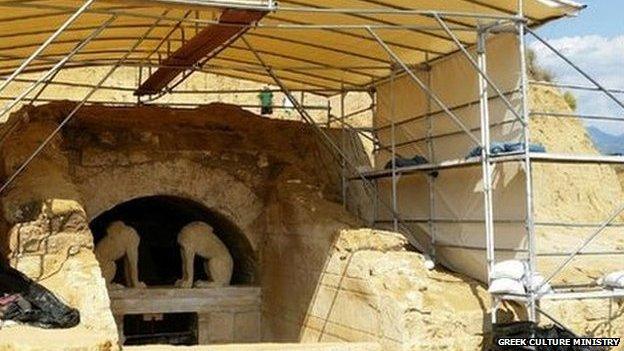
Two sphinxes guard the entrance to the tomb
A massive tomb's been discovered by archaeologists in northern Greece.
It's thought to be the largest burial site ever discovered in the area and has taken experts two years to unearth.
The tomb dates back to the time of Alexander the Great of Macedonia, in the 4th century.
But it's not clear who might be buried there.
Women are ancient guardians
Inside, archaeologists found two huge marble statues, in good condition.
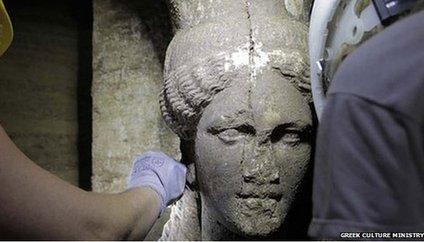
The marble carved face shown here is almost intact
Each of the marble female figures has one arm pointing out, which is thought to help prevent people coming inside the main chamber.
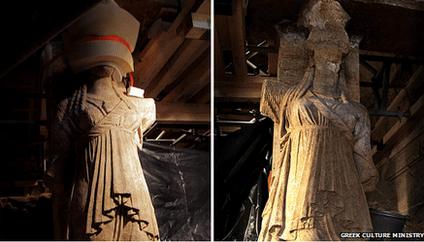
The face of marble statues measuring 2.27m high is revealed
The site where archaeologists are still digging, is protected 24 hours a day by two police officers. They want to keep tourists away from the nearby village of Mesolakkia.
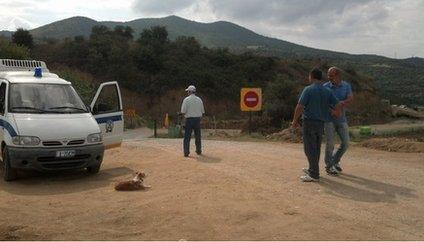
The site is guarded around the clock to keep visitors away from the ancient tomb
The teams progress has now slowed down since workers found third chamber that is in danger of collapsing.
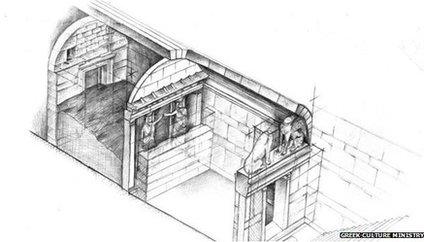
A sketch of the tomb shows the two sphinxes at the front and the marble statues of women behind
Archaeologists agree the magnificence of the tomb was built for an important person - some believe it was for Alexander the Great himself- others think it's for a close member of his family.
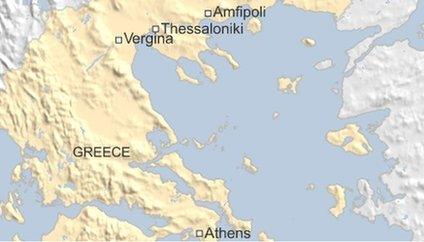
The tomb's been discovered in northern Greece
Local farmer Antonis Papadopoulos said: "The magnitude and opulence of this tomb is unique. Common sense says he is the one buried inside." Another says the villagers are "hoping they have won the lottery".
